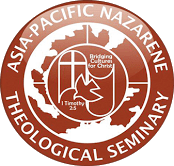- Resource Types
- Resource Languages
- Institutional Repository
 Visit the home page
Visit the home page
About Site Language
WHDL is viewable in multiple languages. Use the pull-down menu to select a language to view the site.
I changed my language, but I’m still seeing resources in the other languages?
If a resource or text has not been translated into your selected language, it will appear in the initially added language. We are always looking for help translating these resources. If you can help, contact us!
WHDL - 00021582


The identification of children at risk of developing psychopathology following mass crisis events remains a significant challenge in trauma research and intervention. This dissertation addresses the critical gap between current “stepped care” models, which recommend triaging children based on mental health risk, and the lack of clear methods for such stratification. The research challenges the prevalent practice of treating children as “little adults” in trauma assessment and intervention, arguing instead for a developmentally sensitive, community-embedded approach. Drawing on three theoretical foundations—disaster response history, Child Theology, and resilience studies—this research presents a novel framework for understanding children's trauma responses. The study employs Child Theology’s concept of “setting the child in the midst” and views children as the imago Dei in purest form, reflecting the relational nature of the Godhead. This theological framework, combined with Ann Masten’s definition of resilience as “the capacity of a dynamic system to adapt successfully to disturbances,”1 provides a theoretical basis for examining children's trauma responses within their complete ecological system. The study analyzes data collected by OpSAFE International across 51 child mental health psychosocial interventions in the Philippines, encompassing 7,015 children aged 6-12 years, the age range of the OperationSAFE CHMHPSS. Using the Rapid Trauma Assessment Scale for Children (R-TAC), the research measures seven aspects of children’s well-being—somatoform issues, depression, PTSD, coping skills, shock, and stress—as assessed by trained local volunteers. This methodology intentionally embeds assessment within the community context, recognizing that children are both dependent upon their surrounding community for resilience and are themselves part of that community’s resilience. Statistical analysis revealed significant age-related differences in trauma response (Chi2=163.5, df=6, p<0.001), with younger children showing greater vulnerability. The study identified three distinct developmental peer groups: Group A (6-7 year-olds plus 8-year-old males) showing the most severe PTSS, Group B (9-10 year-olds plus 8-year-old females) showing moderate PTSS, and Group C (11-12 year-olds) showing the least severe PTSS. Each of the 51 interventions represented a unique ecological system of resilience, with first-quartile PTSS scores ranging from 10 to 32 across different locales in different regions of the Philippines after various disasters. This research makes significant contributions by demonstrating that effective trauma screening must consider both developmental timing and community context. The findings support a model of early intervention that incorporates Psychological First Aid principles while maintaining developmental sensitivity and community engagement. The study’s success in identifying at-risk children through community-based assessment suggests a scalable approach to meeting the needs of entire communities after mass trauma, while ensuring children receive appropriate developmental and social support. The results provide a practical framework for improving early intervention strategies and resource allocation in post-disaster mental health services for children. By embedding assessment within community-based interventions and comparing children within appropriate developmental peer groups, this methodology enables more precise risk assessment while supporting community resilience. This approach not only aids in identifying children at risk but also contributes to community restoration—a critical factor in children's long-term recovery from trauma.
34 Resources
This collection contains the dissertations of our graduates that fulfilled the degree of Doctor of Philosophy in Holistic Child Development at Asia-Pacific Nazarene Theological Seminary. The program is designed for those preparing to be equipped in leadership, teachers of children, practitioners, and pastors, so that they will have the gifts, skills, and capacity to care holistically for children inside and outside the church.
2016
2007
2007
2007
2003
2025
2007
2023
2025
2022
2007
2016
2024
2007
2018
1916
1905
2007
2007
2023
n.d.
1994